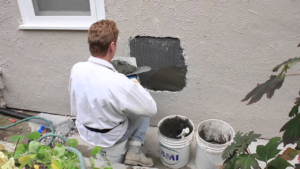Whether you want to repaint the vanity or add an energy-efficient shower, a remodel will give your bathroom a fresh new look. And on average, homeowners recover 59% of what they invest in a bathroom remodel through increased home value.

Review the contractor’s portfolio of projects. Ask about design styles and materials used — does their work match your desired style? Contact Bathroom Remodeling San Jose CA for professional help.
Many homeowners focus on color, texture, and durability when selecting flooring for their bathroom. Because this room is frequently damp and subjected to heavy foot traffic, the floor must be both beautiful and functional.
Flooring is one of the largest expenses in any home remodel project. Homeowners can choose from a wide range of materials to fit their design ideas and budgets.
Tile is a classic and versatile option for any bathroom. It comes in a wide variety of shapes, sizes, and colors and can be cut to create patterns or unique designs. Geometric and patterned tile is a popular choice for bathrooms that want to stand out from the crowd.
Hardwood floors are a beautiful addition to any space, but the humidity in bathrooms can cause damage to the wood over time. If you’re looking for the elegance of wood flooring in your bathroom, engineered wood is an excellent alternative that is moisture-resistant.
Laminate flooring is another cost-effective option that is easy to install. However, laminate is sensitive to moisture and can break down over time. Wood veneers, on the other hand, are more durable and look much like natural wood.
If you’re going with a hardwood floor, make sure to use a waterproof sealer on the surface and consider installing a plastic barrier under the flooring. This will prevent water from reaching the subfloor, which can cause rot and mold.
It is also important to inspect the existing floor for rot and mold. This can be done by carefully removing the edges of the floor and looking for any signs of damage underneath. This is a good opportunity to repair any rot or mold problems that you find.
A complete remodel is an excellent way to add value to your home. Not only will it give you a new, modern bathroom to enjoy, but it will also increase the resale value of your home. Before you begin the process of remodeling your bathroom, make a list of your priorities and set a realistic budget.
Regardless of the type of remodel you do, it’s important to have an experienced professional oversee the work. Hiring a professional will ensure that the job is completed correctly and on time, saving you money in the long run.
Cabinets
Cabinets are a key element of bathroom storage, providing both style and utility. Depending on the space available and your preferred aesthetic, they can help you achieve a modern, minimal look or capture a more traditional feel. If you’re looking for an elegant option, consider a vanity with integrated cabinetry. While this may mean you’ll lose floor space, the added drawers and cabinets can make up for this in terms of storage capacity.
Whether you’re going with standard cabinetry or something more customized, there are a variety of materials and finishes to choose from. A quick online search reveals an endless array of designs, colors and features. You can find painted or stained options, distressed finishes and even pieces that resemble furniture. While the options are nearly limitless, a few key factors should be kept in mind when choosing cabinets for your bathroom.
The type of material you select will influence both the style and durability of your new bathroom cabinets. For example, plywood is more resistant to moisture than particleboard. Moisture-resistant MDF (MDF that’s been treated with a green dye) is another good option. In addition, choosing a varnish or high-quality sealant that protects the cabinets from humidity will also contribute to their longevity.
There are a number of different types of bathroom cabinets available, so it’s important to consider your specific storage needs before committing to a particular style. Medicine cabinets, over-john cabinets and shallow wall cabinets are great for storing toiletries and other small items. They can be paired with mirrors to create a stylish yet functional storage solution.
Vanity cabinets that incorporate storage spaces under the sink offer plenty of space for towels, soap bottles and other everyday essentials. If you’re working with a larger space, you might want to consider adding a linen cabinet that can be used to store bulkier items like sheets and blankets.
Countertops
Countertops are a big part of a bathroom’s look, and they’re an opportunity for homeowners to make a style statement that’s uniquely their own. The variety of materials on the market can make it difficult to choose just one for your remodel, but determining what’s important for you and your family can help narrow down the options.
The amount of traffic the countertops receive can also factor into your decision. If you have kids or pets, a countertop that’s easy to clean will make your life much simpler, and can help protect the surface from stains and other damage. A countertop that reflects light can create a feeling of openness in the room, while dark colors may make it feel smaller and more intimate.
Natural stone offers a classic, timeless aesthetic that can enhance any bathroom’s design. Each slab of natural stone is unique, providing a one-of-a-kind addition to your home. The strength and durability of natural stones makes them a long-lasting option. Natural stone countertops require annual sealing maintenance to keep their non-porous properties intact and prevent stains.
A popular choice for contemporary bathrooms, concrete countertops offer an industrial chic style. This durable material can be stained to complement any color scheme and can even include embedded tile, stone, or glass for a more textured finish.
Laminate is another low-maintenance option, and can be mixed and matched to create the exact look you want for your bathroom. While not as durable as other choices, laminate is an excellent budget-friendly alternative that will still provide you with a stylish, high-end look.
Whatever you decide to use for your bathroom remodel’s countertops, it’s best to hire a professional contractor to install them. They have the tools and experience to ensure a seamless fit and finish, as well as warranties and guarantees for peace of mind. Professional installation may also save you money in the long run by avoiding costly repairs and replacements. Make sure your bathroom remodeling contractor has unobstructed access to the area, and moves any rugs or other items that could get damaged during the process.
Showers
Showers are a cosmetic element, but they can also impact how you use your bathroom. Your shower’s layout and design can make a significant difference in your experience and enjoyment. Whether you choose a frameless glass door, built-in benches, or a variety of tile designs and patterns, your new shower can become an artistic masterpiece that’s uniquely your own.
A new shower can elevate the look and feel of your entire bathroom, while bringing added functionality and sustainability. Choosing eco-conscious materials and high-efficiency fixtures can increase your home’s energy efficiency while lowering your water consumption and utility bills.
The right shower for your space is a deeply personal choice, and largely depends on your budget, lifestyle, and needs. Changing your showerhead can make an instant impact on the overall experience of your bathroom, with options like rain shower experiences, varying settings, and extra handheld heads. If you’re considering selling your home in the future, or if you have family members with physical disabilities or mobility issues, barrier-free and zero entry showers can improve accessibility, aligning with the aging in place movement that is popular among Beacon residents.
Frameless shower doors offer a sleek, minimal look that showcases your beautiful tile work and other design elements. Adding a glass door can instantly create a more spacious appearance, while allowing natural light to flood the area. Consider a clear glass option to maintain visibility, or choose frosted glass for a more subtle look.
If your bathroom features a tub as well as a walk-in shower, consider tiling the ceiling to produce an attractive room-within-a-room effect. Layering different pattern and shape tiles, like the ones Desiree Burns Interiors used in this primary bathroom, can add texture and depth.
A new shower can be a major project that takes days or even weeks to complete, and requires your home’s plumbing to be turned off during the remodeling process. Hiring an experienced bathroom remodeler can ensure that the job is completed quickly and with as little disruption to your daily routine as possible.








